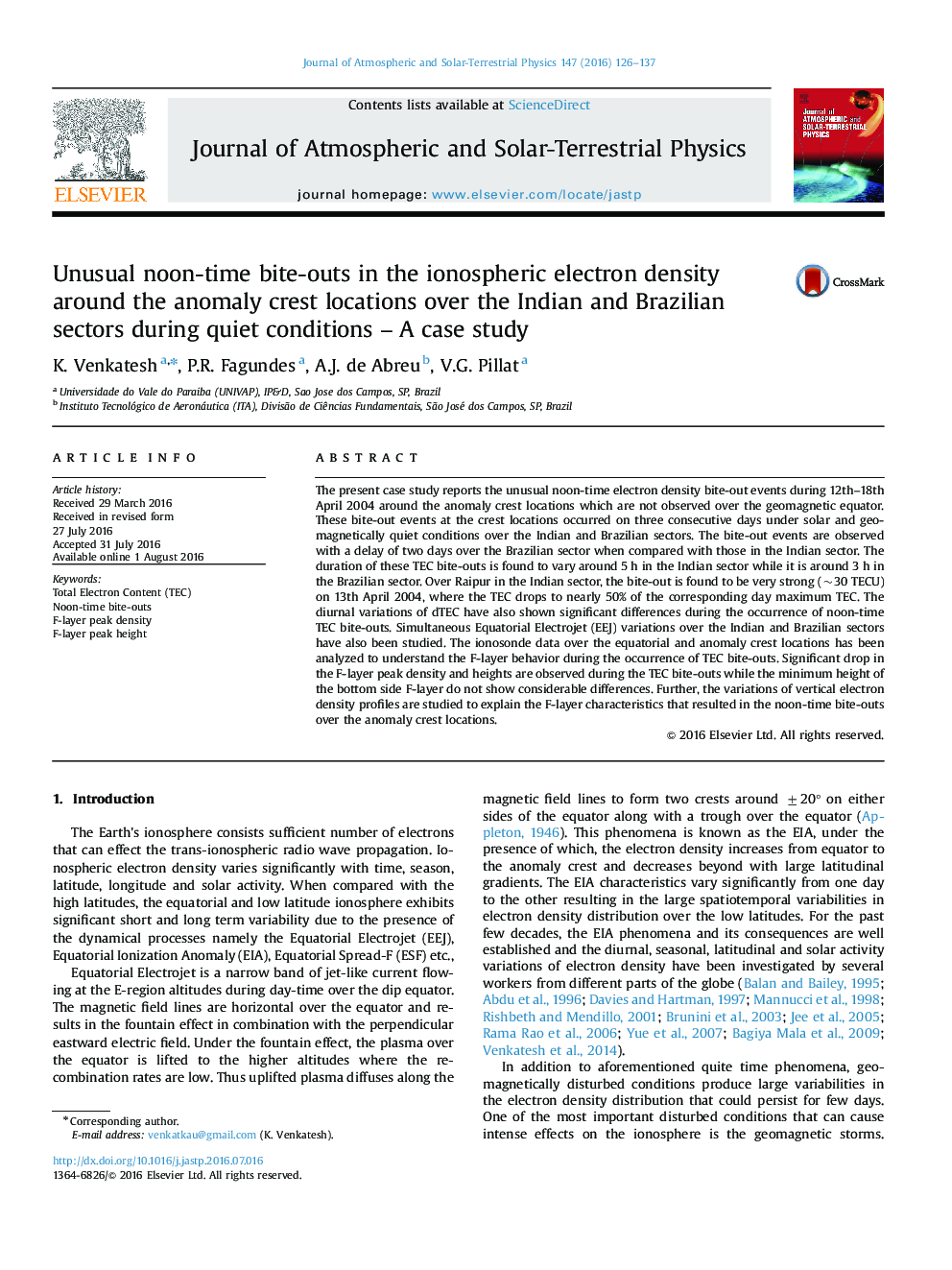| Article ID | Journal | Published Year | Pages | File Type |
|---|---|---|---|---|
| 1776183 | Journal of Atmospheric and Solar-Terrestrial Physics | 2016 | 12 Pages |
Abstract
The present case study reports the unusual noon-time electron density bite-out events during 12th-18th April 2004 around the anomaly crest locations which are not observed over the geomagnetic equator. These bite-out events at the crest locations occurred on three consecutive days under solar and geomagnetically quiet conditions over the Indian and Brazilian sectors. The bite-out events are observed with a delay of two days over the Brazilian sector when compared with those in the Indian sector. The duration of these TEC bite-outs is found to vary around 5Â h in the Indian sector while it is around 3Â h in the Brazilian sector. Over Raipur in the Indian sector, the bite-out is found to be very strong (~30 TECU) on 13th April 2004, where the TEC drops to nearly 50% of the corresponding day maximum TEC. The diurnal variations of dTEC have also shown significant differences during the occurrence of noon-time TEC bite-outs. Simultaneous Equatorial Electrojet (EEJ) variations over the Indian and Brazilian sectors have also been studied. The ionosonde data over the equatorial and anomaly crest locations has been analyzed to understand the F-layer behavior during the occurrence of TEC bite-outs. Significant drop in the F-layer peak density and heights are observed during the TEC bite-outs while the minimum height of the bottom side F-layer do not show considerable differences. Further, the variations of vertical electron density profiles are studied to explain the F-layer characteristics that resulted in the noon-time bite-outs over the anomaly crest locations.
Keywords
Related Topics
Physical Sciences and Engineering
Earth and Planetary Sciences
Geophysics
Authors
K. Venkatesh, P.R. Fagundes, A.J. de Abreu, V.G. Pillat,
